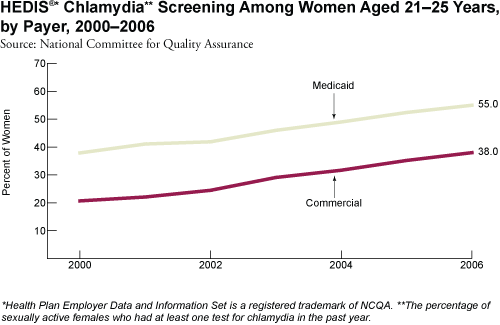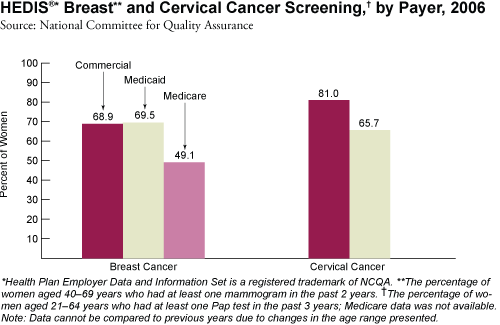Quality of Women's Health Care
Indicators of the quality of health care can provide important information about the effectiveness, safety, timeliness, and patient-centeredness of women’s health services. Indicators used to monitor women’s health care in managed care plans include screening for chlamydia, screening for cervical cancer, and receipt of mammograms.
In 2006, chlamydia screenings increased for women aged 21–25 years enrolled in commercial (private) health care plans or Medicaid. As in previous years, females with Medicaid coverage were more likely to have received a chlamydia screening in the previous year than those with private coverage (55.0 versus 38.0 percent, respectively). Since 2000, the percentage of sexually active females screened for chlamydia has increased by nearly 84 percent among those in commercial plans and 45 percent among Medicaid enrollees.
In 2006, receipt of mammograms for women aged 40–69 was approximately the same for women with private coverage and those covered through Medicaid (68.9 and 69.5 percent, respectively). However, Medicare-enrolled women were considerably less likely to have received a mammogram at least once during the previous 2 years (49.1 percent).
Cervical cancer screenings appear to be more accessible to women with commercial coverage than to those covered by Medicaid. Cervical cancer screenings were received at least once every 3 years by nearly 81.0 percent of commercially-insured women and 65.7 percent of women covered by Medicaid.


